Sweet, tart, luscious, and creamy. This easy to make passion fruit curd comes together in minutes. Spread it on toast, swirl it in yogurt, or use it to fill a layer cake!
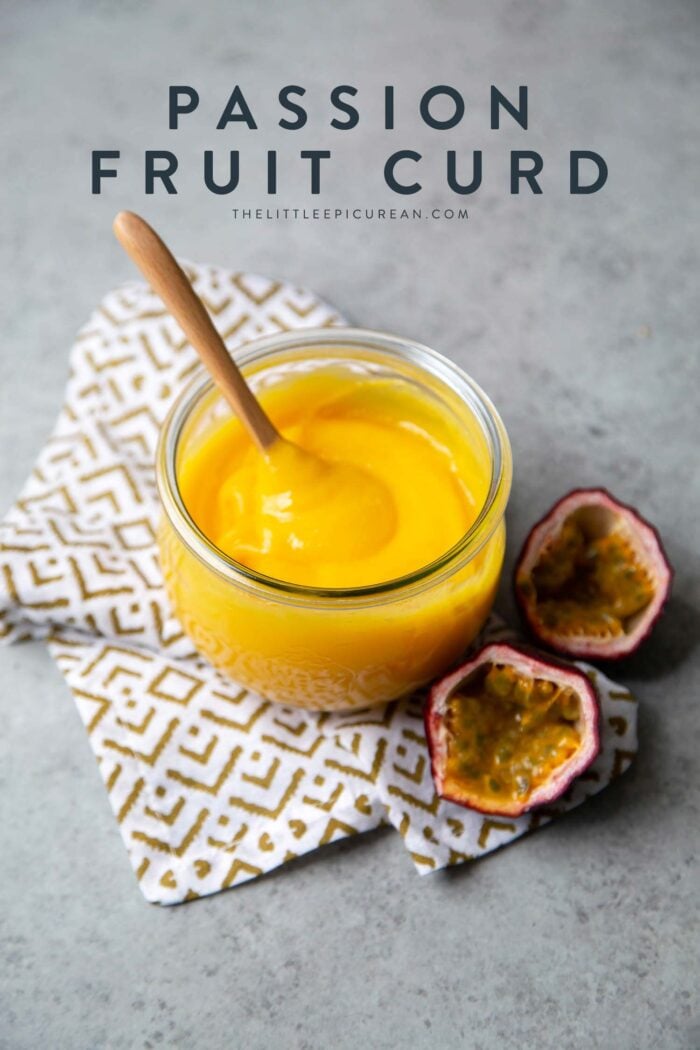
Disclaimer: The fresh passion fruit used in this recipe were gifted by Rincon Tropics. They are a 6th generation family farm located in Carpinteria, California.
Last week, we explored how to make passion fruit juice.
Today, let’s learn to extend the life of this delicious fruit by cooking it into passion fruit curd!
Table of Contents
What is curd?
Curd is a rich and creamy filling made from citrus juice, sugar, eggs or egg yolks, and butter.
It is typically made with tart citrus juices, lemon curd being the the most popular.
Fruit curd is used to fill pastries, tarts, and cakes.
It is spread on biscuits, scones, toasts, pancakes, and other breakfast goods.
While it is easy to purchase a jar of curd, it is very satisfying to make it yourself!
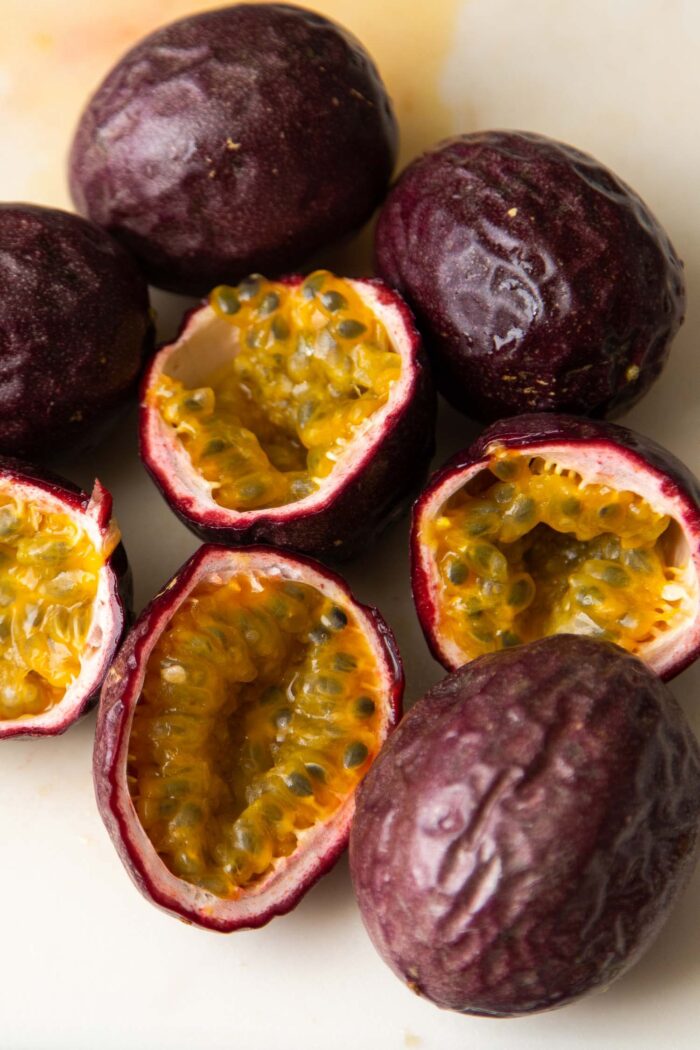
Fresh versus Frozen Passion Fruit
This recipe works well with either fresh or frozen passion fruit puree.
When using fresh passion fruit, seeds may be included into the curd, if desired.
The frozen version may be labeled as passion fruit pulp.
Pay attention to the ingredient list. It should be unsweetened and be 100% pure passion fruit.
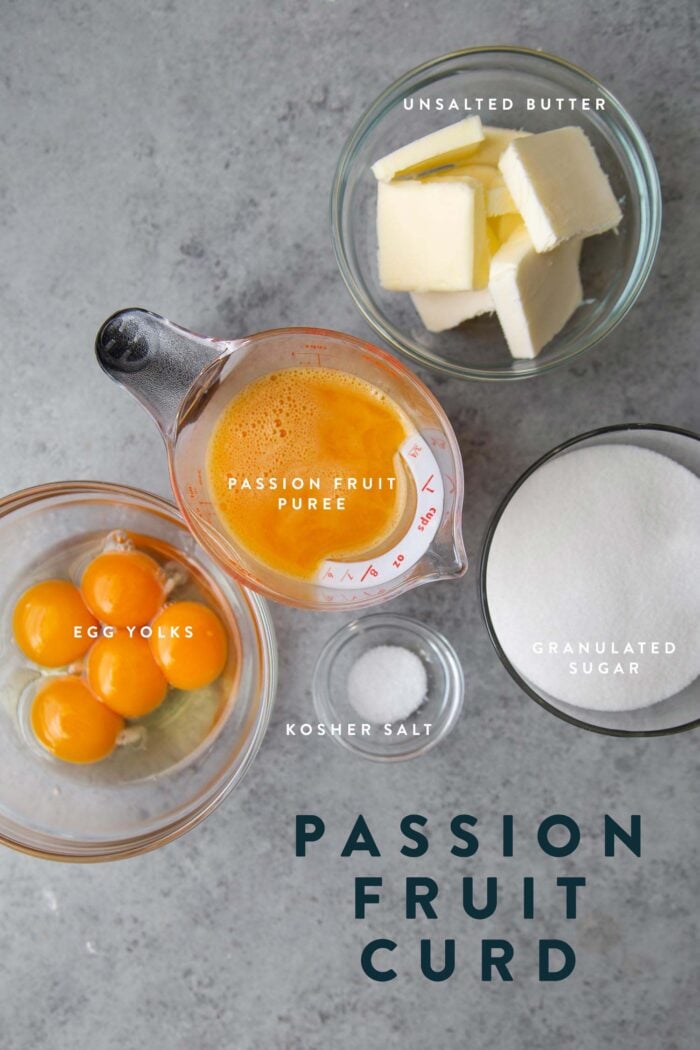
The Problem with Eggs
Acid from lemon and other fruits speeds up egg coagulation.
Acids lowers the temperature at which eggs coagulate.
When the eggs are not properly monitored, this may lead to curdled fruit curd.
To maximize the thickening of the curd, cook mixture over a low heat while stirring constantly.
How to Cook Passion Fruit Curd
There are two ways to cook passion fruit curd: direct heat and indirect heat.
I recommend the direct heat method because it is faster.
However, this method requires use of a heavy bottomed nonreactive sauce pot.
Nonreactive cookware includes stainless steel, glass, and ceramic ware. This is essential when cooking acidic foods.
Use of a reactive pan made out of aluminum or cast iron will alter the flavor of acidic foods, causing them to taste iron or metallic flavored.
In either method, the mixture needs to be heated to nappé consistency or at least 160°F.
Direct Heat Method
- Use a nonreactive sauce pot to cook the ingredients directly over the heat source.
Indirect Heat Method
- Set up a double boiler (or bain-marie) by placing a glass bowl over a pot of barely simmering water. Ensure the bowl does not touch the water.
- The steam from the simmering water will gently heat the mixture.
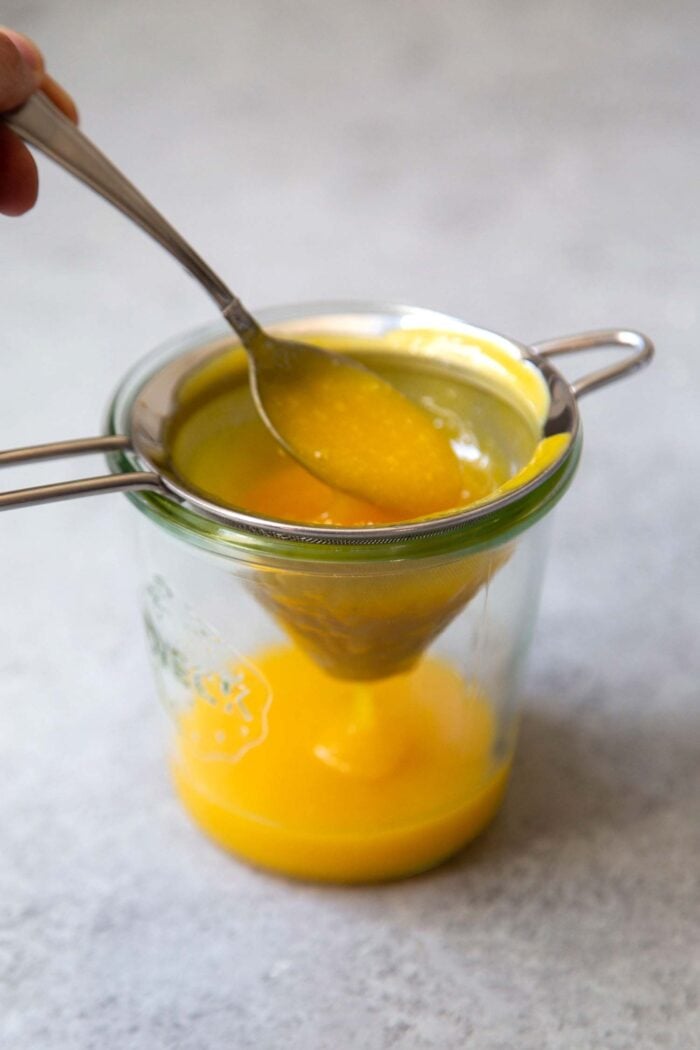
Straining Curd
Straining is not required, but highly recommended.
It will remove any egg bits that may have curdled during cooking.
Straining ensures a smoother textured passion fruit curd. Use a stainless steel fine mesh strainer (fine mesh sieve).
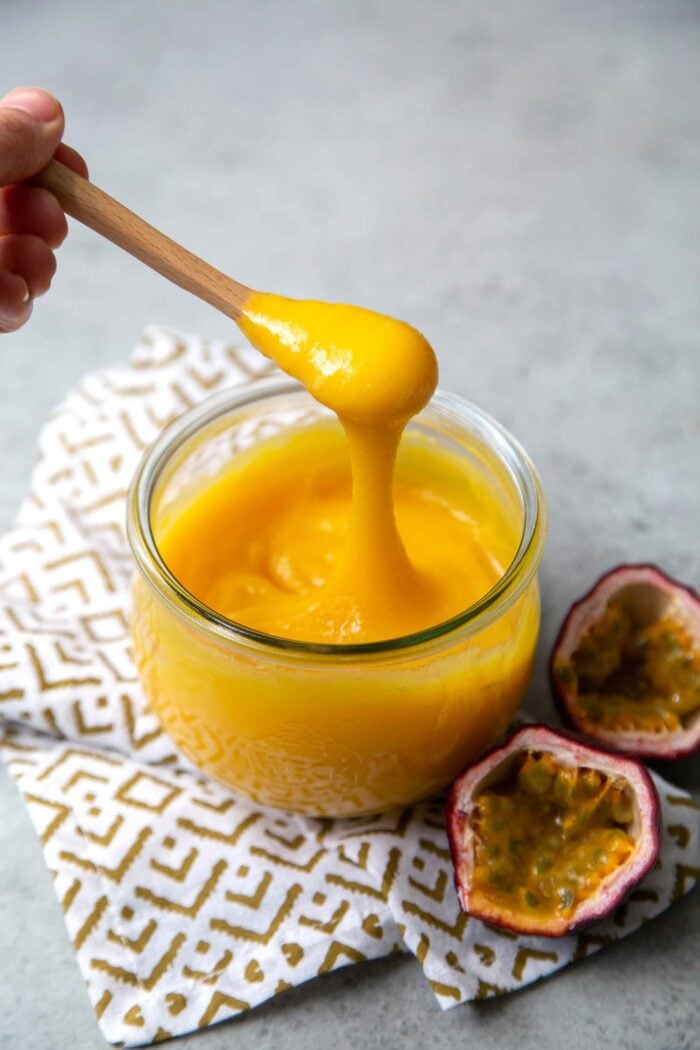
Cooling the Fruit Curd
Place the strained passion fruit curd in a medium bowl. Place plastic wrap directly over the surface of the curd.
This will protect the surface from forming a skin as it cools.
The passion fruit curd may be used immediately after cooking. However, it will be slightly runny and warm.
Chill the plastic wrap covered curd in the fridge for at least two hours to thicken and cool.
At this point, the curd will be much more stable and easier to spread.
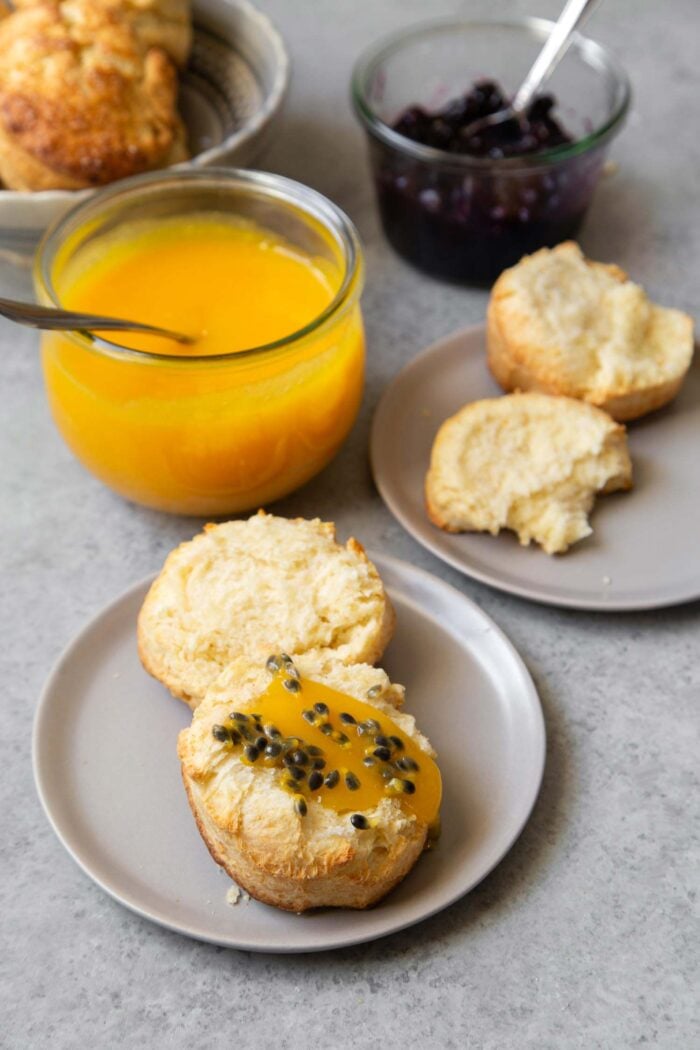
What to do with passion fruit curd
There are many uses for passion fruit curd. Similar to lemon curd, you may:
- Spread it over biscuits, scones, English muffins, or toast
- Swirl it into yogurt or oatmeal
- Top meringues or pavlovas
- Add a dollop to ice cream sundae or banana split
- Use it to fill a layer cake
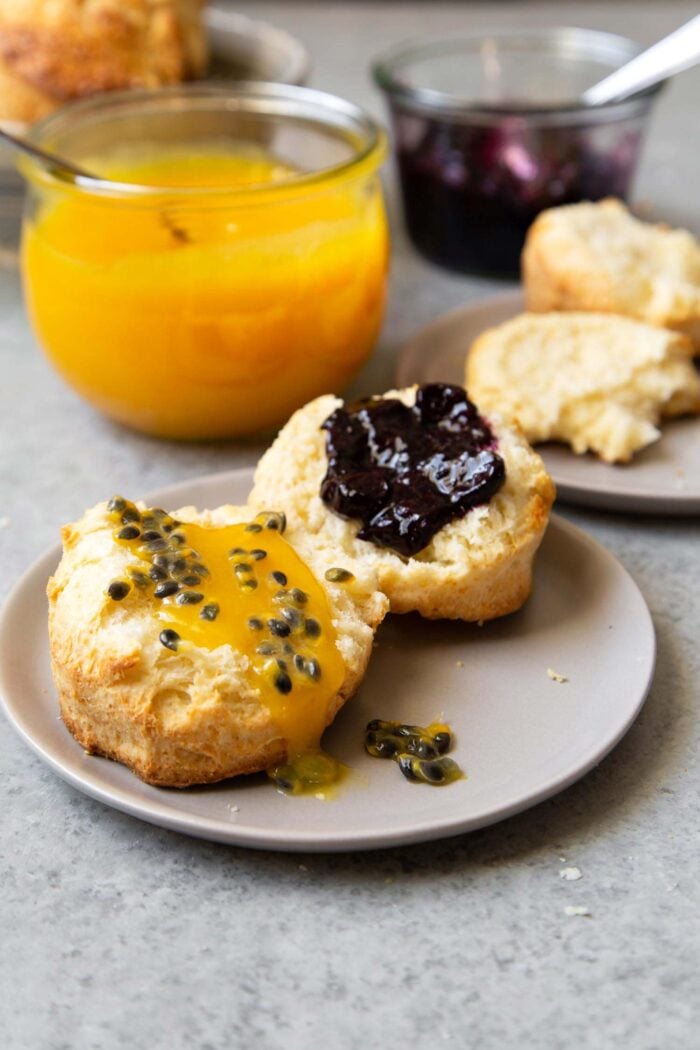
What flavors pair well with passion fruit
Passion fruit is tangy and sweet.
It pairs well with other tropical fruits such as mango, coconut, and banana.
Passion fruit is also classically paired with raspberries in meringues and pavlovas.
The photo above shows passion fruit paired with blueberry compote.
This is another excellent pairing. The sweetness of the blueberries balances out the tartness of the passion fruit.
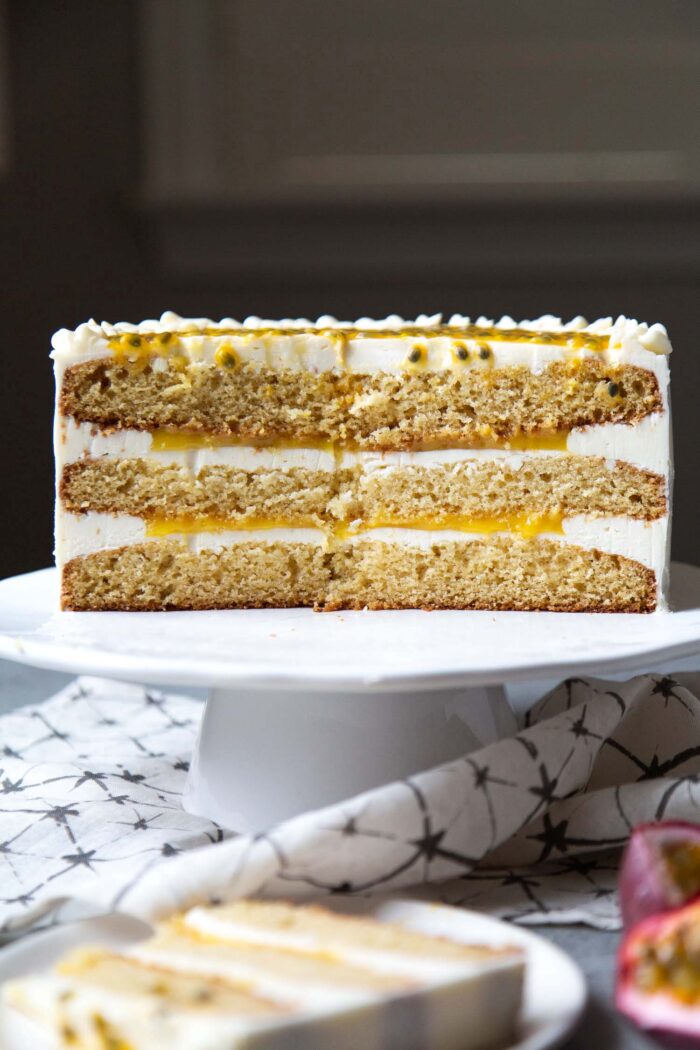
Passion fruit curd is paired with vanilla cake and vanilla Swiss meringue buttercream in this cake!
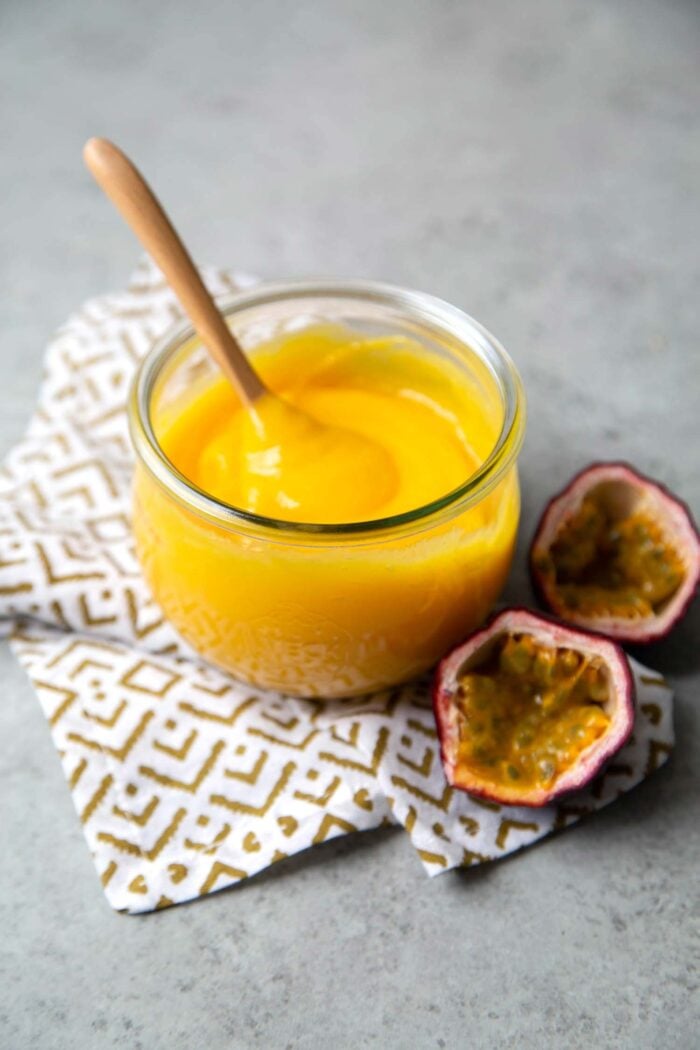
Storage & Leftovers
Keep passion fruit curd in an airtight container in the fridge for up to one week.
Passion Fruit Curd
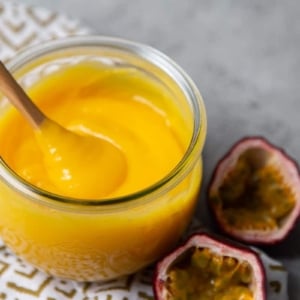
Ingredients
- 1 cup granulated sugar, (200 g)
- 4 large egg yolks
- 1 large egg
- ⅔ cup passion fruit puree,, or pulp*
- ½ cup unsalted butter, (113 g)
- ½ teaspoon kosher salt
Instructions
Direct Heat Method:
- Whisk together sugar, yolks, and egg. Set aside.
- In a heavy bottomed nonreactive medium sauce pot, gently heat passion fruit puree, butter, and salt over low heat until butter has melted.
- Remove pot from heat and whisk a few tablespoons of the melted mixture into the egg mixture. Continually whisking, continue to add a few tablespoons of hot mixture into eggs at a time.
- Pour all the mixture back into the pot. Set over medium heat. Use a wooden spoon or sturdy spatula to continually stir mixture, making sure to scrape the bottom and edges of the pot to prevent eggs from curdling or scrambling. Cook for about 5-8 minutes until mixture has thickened to nappé* consistency and has reached a temperature of 160°F.
- Remove from heat and strain curd through a fine mesh sieve/strainer into a medium bowl. Cover with plastic wrap, allowing the wrap to lay directly on the surface of curd. Chill in the fridge for at least 2 hours to thicken and cool.
Indirect Heat/ Double Boiler Method:
- Fill a medium sauce pot with about 2-inches of water. Bring to a simmer. Set a glass bowl over the pot, making sure the bottom of the bowl does not touch the water.
- Add sugar, yolks, egg, and passion fruit to bowl. Whisk until eggs are incorporated. Add butter and salt. Continue to gently heat until butter has melted, stirring occasionally.
- Once butter has melted, change to a wooden spoon or spatula. Continually stir mixture for about 8-10 minutes, until it has thickened to nappé* consistency and has reached a temperature of 160°F.
- Remove from heat and strain curd through a fine mesh sieve/strainer into a medium bowl. Cover with plastic wrap, allowing the wrap to lay directly on the surface of curd. Chill in the fridge for at least 2 hours to thicken and cool.
Notes
- Use a heavy bottomed nonreactive sauce pot when cooking acidic foods, such as passion fruit. Nonreactive cookware include stainless steel, glass, and ceramic ware.
- Reactive pans such as aluminum and cast iron will alter the flavor of the passion fruit curd. This will result in an iron or metallic flavored curd.
- If you are unsure whether your sauce pot is nonreactive, use the double boiler method (indirect heat method) to cook the passion fruit curd.
- Straining the curd will ensure a smoother texture. It will remove any egg bits that may have curdled.
- Recipe works with fresh or frozen passion fruit. Passion fruit seeds may also be included, if desired.
- If using frozen passion fruit pulp/puree, make sure the puree is unsweetened. It should be 100% pure passion fruit pulp/puree.
- This recipe was created using Diamond Crystal Kosher Salt. Diamond Crystal is less salty than Morton Kosher Salt.
- Nappé consistency is achieved when mixture is thick enough that when it coats a spoon or spatula, you can draw your finger through the mixture and it holds a line. This is achieved when mixture reaches 160-180 degrees F.
- Cooking mixture to 160°F will pasteurize the eggs, making them safe to eat.
- Straining is not required. However, it will remove any egg bits that may have curdled during cooking.
- Store passion fruit curd in an airtight container in the fridge for up to one week.
Nutrition
Nutrition information is automatically calculated, so should only be used as an approximation.
 Like this recipe? Rate & comment below!
Like this recipe? Rate & comment below!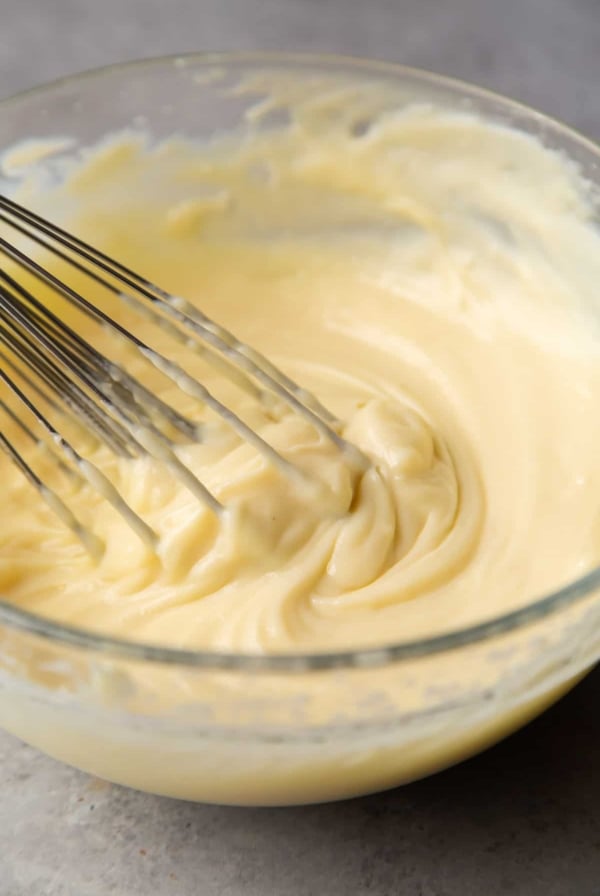
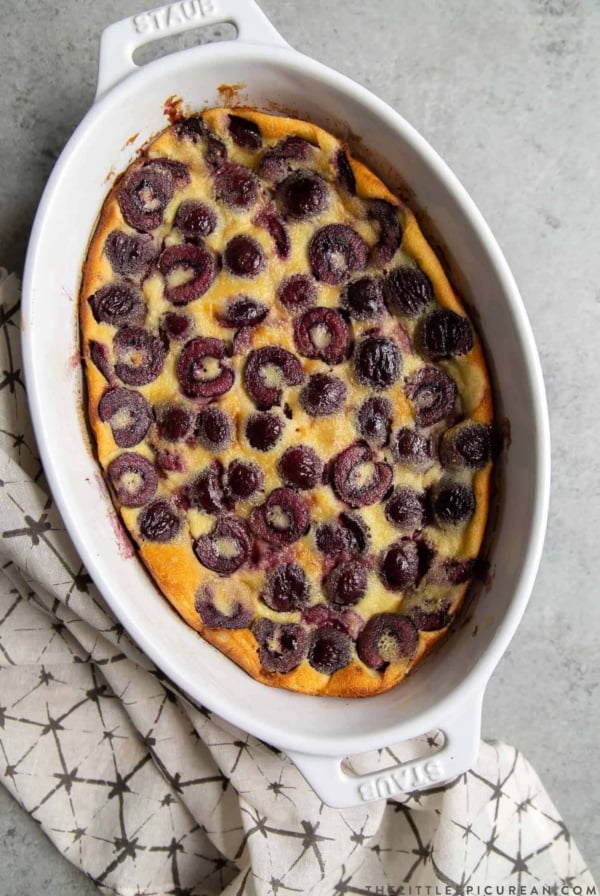
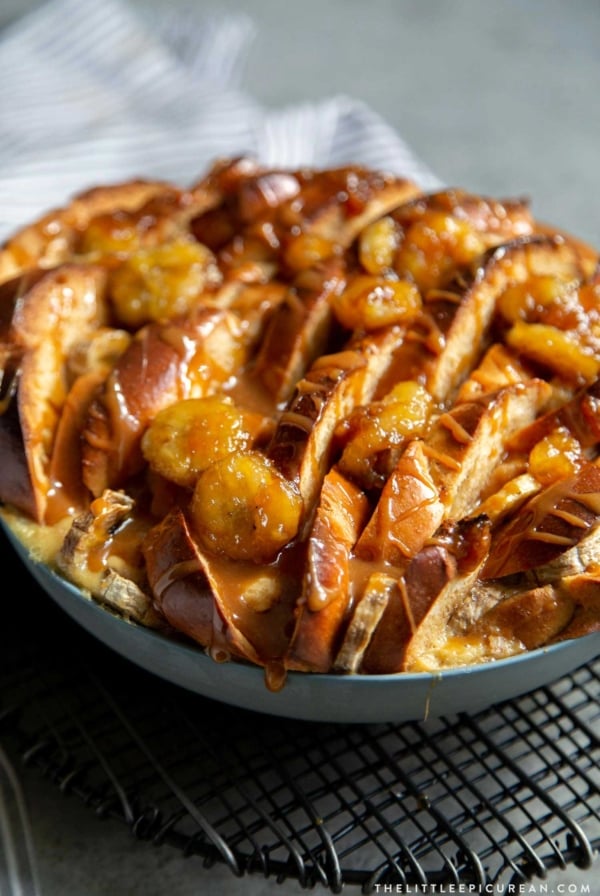
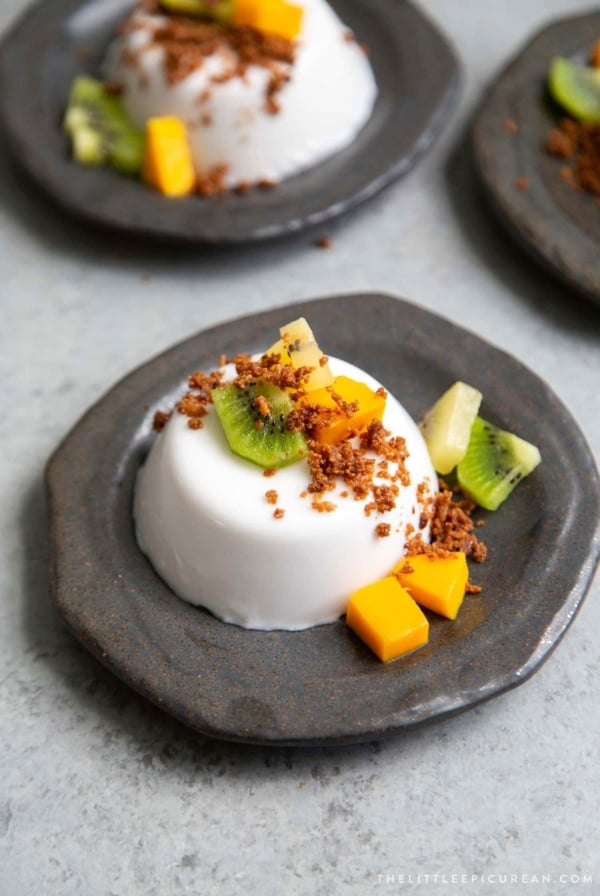





I was only able to find sweetened passion fruit puree… can i still use it?should i reduce the quantity of sugar or omit it completely?
Thank you
This specific recipe is for unsweetened passion fruit puree. I cannot give you an accurate measurement for how much sugar to add because I have no idea how sweet your fruit puree is.
Can I use salted butter and thus, eliminate the kosher sat??? I live remote, in central America… ad un-salted butter is hard to get.
Yes, you can use salted butter and omit the extra salt.